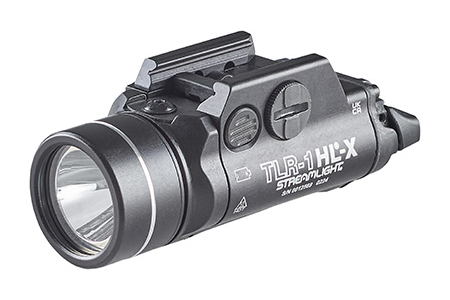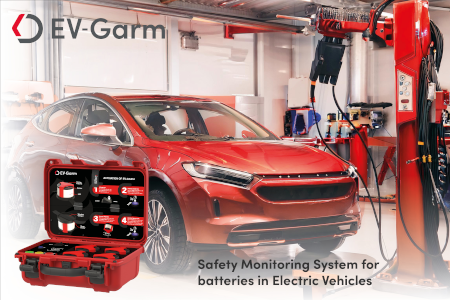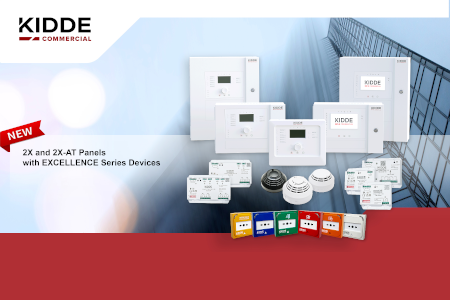The new generation of mobile emergency command vehicles is helping deliver huge improvements in the way emergency services manage the different types of incidents they have to deal with. In the past commanders and their support teams may have used old style incident command vehicles, usually little more than mobile (paper) map rooms with a few radios and whiteboards. Not any more.
Now services are in an era of improved communications across incident grounds and back to headquarters, using mobile satellite broadband, live wireless video and other solutions, thereby delivering high speed data flows and real time situational awareness and a Common Operational Picture – within all levels of services and between services. This is important, because it means services are now able to perform much more effectively (and some of the mistakes of the past, highlighted by major incidents where lives have been lost unnecessarily, are less likely to happen).
Supporting this pioneering collaborative work within emergency services around the world, UK-based Excelerate Technology Ltd has helped drive the development of what are considered to be some of the world’s most advanced mobile emergency management vehicles. This is generating growing international interest, including from the Middle East. Emergency services and civil defence forces and agencies are interested in learning about highly innovative UK projects such as the HART (Hazardous Area Response Teams) programme, which is delivering a standardised, national approach for UK ambulance services dealing with incidents inside the ‘hot zone’, such as CBRN attacks, USAR incidents, chemical spills and releases, as well as other threats to life.
Excelerate Technology has supported these initiatives by sourcing, developing and introducing many of the new technologies that emergency services have needed to implement their plans. Key among these technologies has been the use of mobile satellite broadband and wireless solutions to deliver data, voice, internet and video to commanders. Ten years ago the company was quick to see the potential of these emerging technologies and to adapt them for specific emergency service use, working closely with customers, such as the national HART ambulance service project team, the fire services and police forces.
Critical to the success of these developments has been the need to identify how emergency service communications requirements can be best supported by the use of new technologies, followed by prototyping, systems integration within compact and ergonomically suitable work spaces, displays and control panels, thereby creating easy-to-use solutions. This has been complemented with testing, training and exercising to deliver maximum operational benefits for the investments made.
These solutions are now being seen in increasing numbers of forward command vehicles and incident command units around the UK and the world, vehicles which are changing command doctrine and the way emergency services work.
While there are variations in the different types of command suites and technologies used within the various emergency command vehicles supported by Excelerate Technology, there is generally a core set of common systems, features and functionality. Some of these solutions are unique to Excelerate, having been developed by the company’s Research and Development department.
To help services identify which solutions are likely to be of most use to them, Excelerate has compiled a short User’s Guide to Mobile Emergency Command Solutions, Mobile satellite broadband communications
This is at the heart of Excelerate’s technology offering, providing commanders with a robust, easily accessible and high capacity capability. Roof-mounted transportable satellite solutions provide resilient stand-alone broadband connections giving access to secure telephony, data, video, internet and email facilities. Satellite broadband is highly robust, a key factor during major emergencies when other communications systems can be overloaded.
Satellite communications enable command and control vehicles to receive and transmit data from all responders and emergency teams and achieve a Common Operational Picture. Combined with wireless networks, personnel using PDAs, laptops, mobile phones and data terminals can access tactical plans, live video streaming or information from strategic emergency planning software. The range can be extended using self-powered, rapidly deployable MESH wireless nodes.
For maximum resilience, vehicles can communicate directly with each other as well as their appropriate HQs and other locations. Some HQs, such as the West Yorkshire FRS, are now also using satellite broadband receivers at their command centre as well as on their mobile command vehicle.
Wired, wireless and rapidly deployable cameras for live video viewing
Optical and dual-thermal cameras can be mounted on self-powered tripods, the Sherpa climbing camera platform, extendable, pneumatic masts and aerial platforms to transmit live video by COFDM into ICUs and control rooms for viewing by command staff operating at the scene of an incident, and streamed via secure servers to higher level command for online access in real-time by authorised personnel. Body-worn cameras, such as those worn by Gwent Police mobile officers on bikes during the Ryder Cup, can also be used to provide fast reaction video of incidents. In addition, Excelerate can install receivers to provide ‘heli-tele’ downlinks, allowing aerial images from police helicopters and UAVs to be viewed in the command vehicle.
Digital Dashboard Management Interface (DDMI)
The Digital Dashboard Management Interface (UK Patent Application 1116053.8) is a highly innovative new solution which enhances system performance, reliability and communications interoperability.
The Digital Dashboard Management Interface gives users vital data at a glance. This new digital dashboard display system has been designed by Excelerate Technology’s R&D department specifically for the emergency services market to provide a clear, intuitive interface linked to the wide variety of command and support technologies found on the latest generation of incident command vehicles. The company has already received the Department of Health’s authorisation to begin implementing DDMI into all HART Command vehicles.
The simple-to-use interface enables operators to monitor and control the systems and technologies on board command and control units effectively and efficiently, enabling them to focus primarily on their operational roles and to get the best out of their technology and training investment.
Modules within the DDMI include the Communications Management Suite (PBX). This module has been developed to enable multiple communications devices including radios, GSM, TETRA, mobile and VoIP phones and landlines, to be patched through to one another and to enable voice conference participation via a variety of different devices from multiple worldwide locations.
The interface is an easy drag-and-drop one and can be operated and controlled within the DDMI solution on board the command and control unit. This feature helps overcome a major barrier to full interoperability between the different communications systems likely to be used across an incident.
Other features include : Satellite Controls, for simplifying the management and monitoring of satellite communications with intuitive touch-screen controls; Weather Monitoring; Power systems management, that interacts with all systems within the communications rack and ensures that the automatic start-up/shut down of all the systems is managed safely and securely at the touch of ‘one button’; and the Screen and Video Source selector, giving operators the ability to match any number of video sources to any or all required displays on board the unit.
Independent GSM networks
RapidNet is a Private Mobile Network system that enables an independent GSM network to be generated at the scene of an incident if public GSM networks are overloaded or compromised during major incidents or because of other problems.
Command displays
Incident Command Units can also include multi-agency briefing areas with wall-mounted electronic whiteboards and touchscreen displays that run specialised command support and emergency planning applications, as well as being used for video-conferencing and the viewing of live video footage or television news channels.
Rapidly deployable wireless nodes
To support the new trend for using wireless cameras and ruggedised laptops across incident grounds, portable, battery-operated wireless extension nodes can be used to create complete wireless MESH networks.
www.excelerate.info











